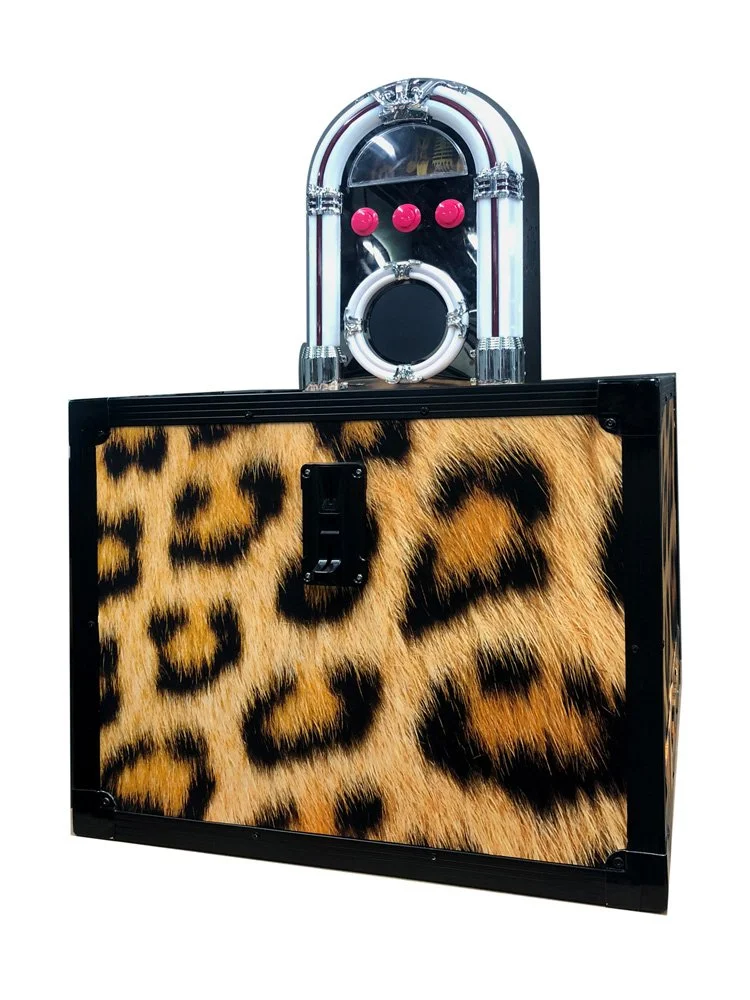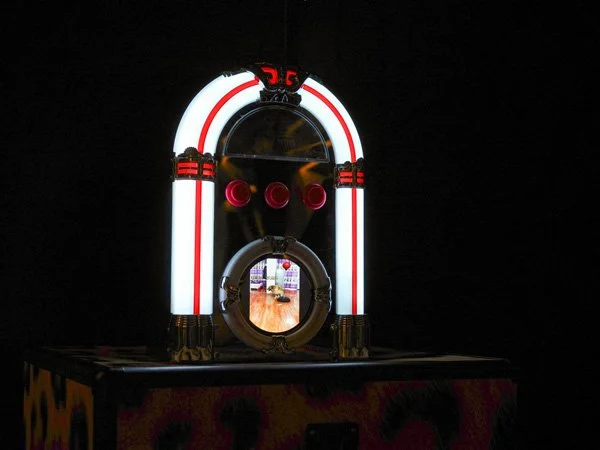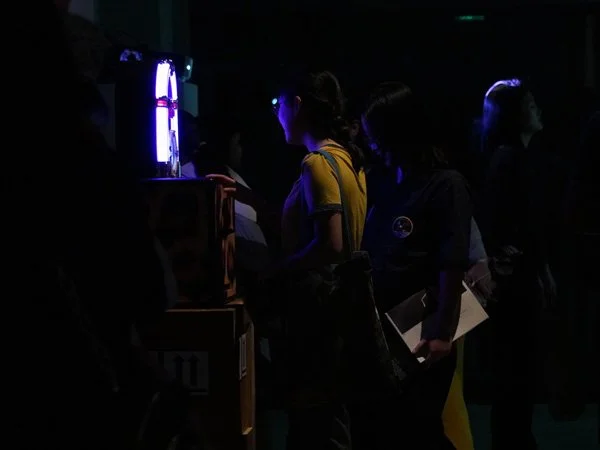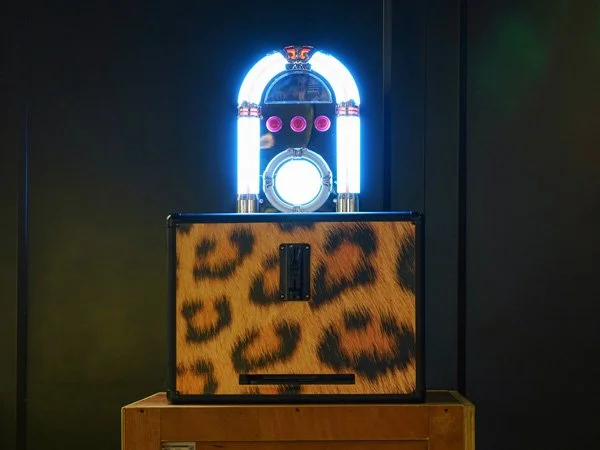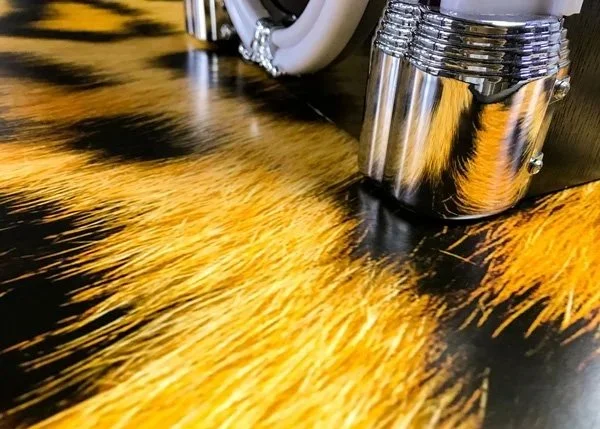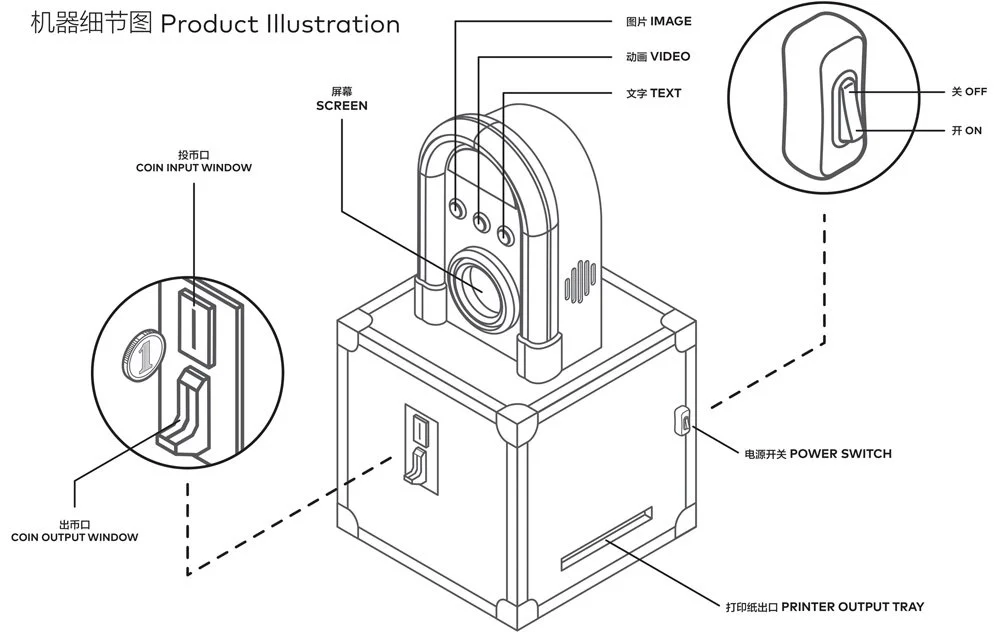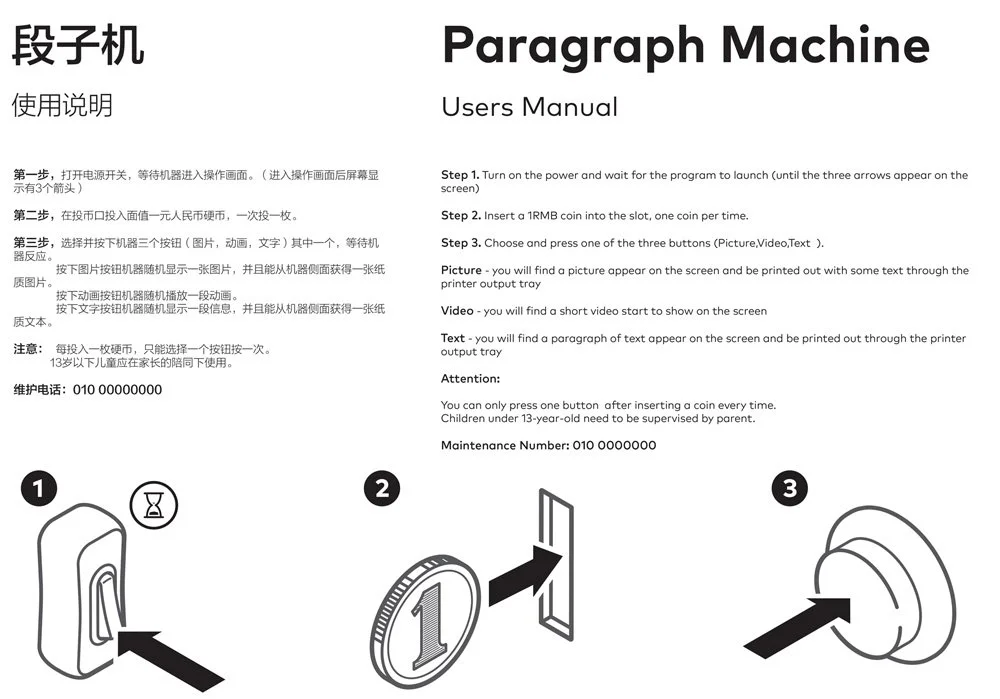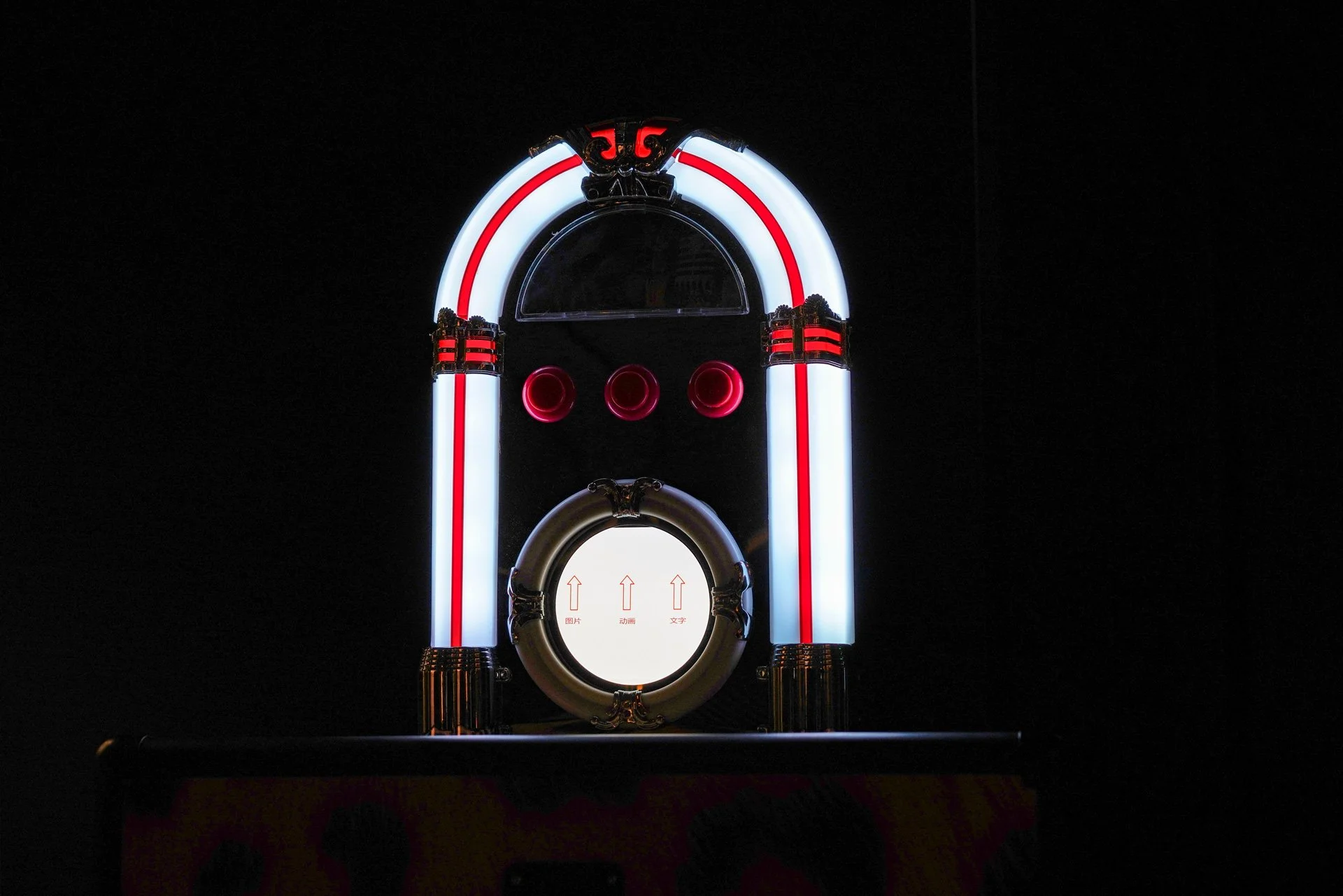
Vol. 4 Yan Lei
《Paragraph machine》
Yan Lei designed a special jukebox which is inspired by the American hippy culture in 1960s. After dropping an one-yuan coin into the jukebox, the viewer can choose to press a button and to see a short video clip from the Internet, or get one print-out with some pictures or texts on. In the process of creation, Yan Lei maintains two seemingly opposing states of "participating" and "staying out". It makes people rethink about the boundary between art and commodity, and also arises people’s interest about the artist’s identity. What is the difference between an artist and a punster? What is art and what is not? Yan lei's work encourages people to explore about the nature of art and the identity of the artist.
By reversing conventional modes of creation, artist Yan Lei approached this project not with a focus on self-expression, but rather on whether the work could possess a “potential for use.” This shift naturally gave Yan Lei’s artistic practice a distinct and unconventional character—he designed and created a “selection machine” that guests could interact with and play. Similar to a jukebox, viewers could insert coins to receive audiovisual content from the machine.
Yan Lei often deliberately blurs the boundaries between artwork and commodity. In 2001, he registered a company named “Li Wuli” (a play on the French word Rêverie, meaning “dream”), to manage his personal finances and taxes, as well as to operate his art practice. This company—and the very act of establishing it—later became one of Yan Lei’s signature works. “Li Wuli,” a foreign-sounding phrase with both exotic flair and the implication that “profit inspires more profit,” also served as the title and theme of major solo exhibitions.
Throughout his career, Yan Lei has often sought to erase the artist’s ego by removing himself from the artmaking process. He has hired untrained laborers to produce “his” paintings, sometimes instructing them to cover images entirely with monochromatic paint… By giving up control over the image, he takes a stance of non-cooperation against systems of authority, while also rejecting the label of “artist” for himself. In this new work, he again hired workers—this time, to build a coin-operated interactive machine. Upon inserting a one-yuan coin, the “selection machine” responds to the user’s choice by playing a video, printing an image, or displaying a piece of text—not content created by the artist, but pulled from the internet.
From the production process to the physical machine to the content it generates, Yan Lei maintains a paradoxical duality: he is both “involved” and “detached.” This navigation between roles reflects the artist’s ongoing inquiry into the boundary between art and commodity, and the shifting definition of what it means to be an artist.
What’s more, the content viewers receive is not necessarily “elegant”—it may even seem shallow or absurd. In that moment, one realizes they’ve become the “victim” of the artist’s prank—but still can’t resist the urge to fall for it again, rummaging for another coin to give it another try.
Many of Yan Lei’s works can be seen as bold, mischievous pranks. In 1997, he and artist Hong Hao fabricated a large number of fake invitations to the prestigious Kassel Documenta exhibition and sent them to Chinese artists who would never miss a chance to participate—pointing directly to the enormous allure of institutional power in the art world.
Embedded in these pranks is Yan Lei’s deep concern with rebellion, freedom, and humor. This latest piece, soon to be installed in a CHAO hotel room, is no exception—its physical design, according to Yan, was inspired by the coin-operated arcade machines favored by American hippies in 1960s bars. In that era, rebellion and freedom were inescapable themes in both life and thought.
He hopes the work will spark curiosity and association around the idea of the artist’s identity, and reflect on the current condition of art. What’s the difference between an artist and an internet jokester? What kind of humor is dull, and what kind can be called art?
Is this art?
The public wonders.
Why can’t it be?
Yan Lei replies.
72 ARTISTS & THEIR GUESTS
In early 2018, CHAO Art Center launched the art program "72 artists and their guests”. We plan to select 72 out of 180 guest rooms as special space allotting to contemporary art. These guest rooms will be provided to artists worldwide by commission, to create original artworks which are going to interact with future guests. As the project progressed, the unique uncertainty included will provoke new ideas and exploration about the concept of where art can happen. You are going to have chances to witness how great artists realize their works through different ways in this special circumstance.
CHAO would like to present 72 kinds of aesthetics, 72 perspectives the world and 72 experiences engaging with art. In these art rooms, guests are able to find their own way to interact with contemporary art in a very relaxing situation.

